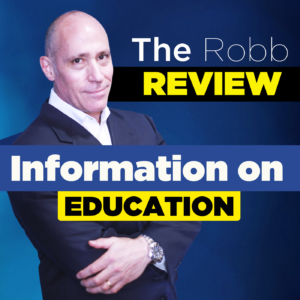
Recently, I was interviewing candidates for a language arts position. Several candidates just finished college and were eager to start a teaching career. Included was one question all candidates had to respond to: How would you teach a particular short story to a group of students? A frequent answer I received was, “Read it to the students or let the students read it out loud.” Letting students read out loud in front of the class is commonly referred to as popcorn or round-robin reading. One candidate proudly explained a reading game called “bump,” where students would read out loud and could intermittently call on another student to continue the r
As a middle school principal, I am often asked what types of reading should occur in a middle school English classroom? What is a balanced literacy program? My answer is not that complex: “Reading can and should be taught.” In addition to the teacher reading aloud for students’ enjoyment, every middle school classroom should have three types of reading:
- Instructional Interactive Read Aloud
- Instructional Reading
- Independent Reading
Instructional Interactive Read Aloud
An interactive read aloud allows the teacher to model in a think aloud how to apply a reading strategy. This modeling during a read aloud builds and/or enlarges students’ mental model of how a strategy works. For this aspect of instruction, I suggest that the teacher models with a short text that matches the genre and/or theme that ties a reading unit together. Short texts can include a picture book, an excerpt from a longer text, a folk or fairy tale, myth or legend, a short, short story, or an article from a magazine or newsletter.
Here are six of many skills and strategies that you can model in interactive read-aloud lessons:
- Making inferences
- Linking literary elements to a text
- Identifying big ideas and themes
- Locating important details
- Skimming to find details
- Emotional responses
The interactive read aloud is teachers’ common text. Once teachers complete the modeling over five to eight classes, they have a reference text to support students by reviewing a lesson. Then, they move to reading aloud from texts that resonate with students.
Instructional Reading
Instructional reading occurs during class. Students need to read materials at their instructional reading level, which is about 90 % to 95% reading accuracy and about 90% comprehension. Organizing instructional reading around a genre and theme—for example biography with a theme of obstacles—permits students to read different texts and discuss their reading around the genre and theme. One book for all does not work. Based on a false assumption, one-book-for-all assumes that no one has already read the book and everyone is on the same reading level.
As an example, the class opens with an interactive read-aloud lesson that lasts about ten minutes. Next, a transition to instructional reading. Find books for students in your school library, your community public library, in your class library, and the school’s book room (if you have one). Instructional reading books stay in the classroom, as students from different sections may be using the same materials each day.
Instructional reading asks students to apply specific skills and strategies to texts that can improve students’ comprehension, vocabulary, and skill because these texts stretch students’ thinking with the teacher, the expert, as a supportive guide.
Independent Reading
Students should always have a book they are reading independently. By encouraging them to read accessible books on topics they love and want to know more about, you develop their motivation to read!
Have students keep a Book Log of the titles they’ve read and reread. Do not ask students to do a project for each completed book; that will turn them away from reading. Reflecting on the value of independent reading is important. Getting hung up on how you will hold students accountable is not valuable. Remember, enthusiastic readers of any age do not summarize every chapter they read in a journal. Neither do you!
Students should complete twenty to thirty minutes of independent reading a night, and that should be their main homework assignment. If you’re on a block schedule, set aside two days a week for students to complete independent reading at school. If you have 90 to 120 minutes for reading and writing daily, then independent reading should occur every day. This is not wasted time. When students read the teacher can read part of the time which communicates a great message to students: adults read independently, too! Equally important during this time, teachers also confer with a few students about their reading.
Including the three types of reading in a middle school curriculum brings balance, engagement, and motivation to the curriculum and holds the potential of improving reading for all students. We must be better than popcorn reading as a
Website: Robb Communications
Blog: The Robb Review Blog
Twitter: @ERobbPrincipal
Facebook: The Robb Review Facebook
Podcast, The Robb Review Podcast

![]()












